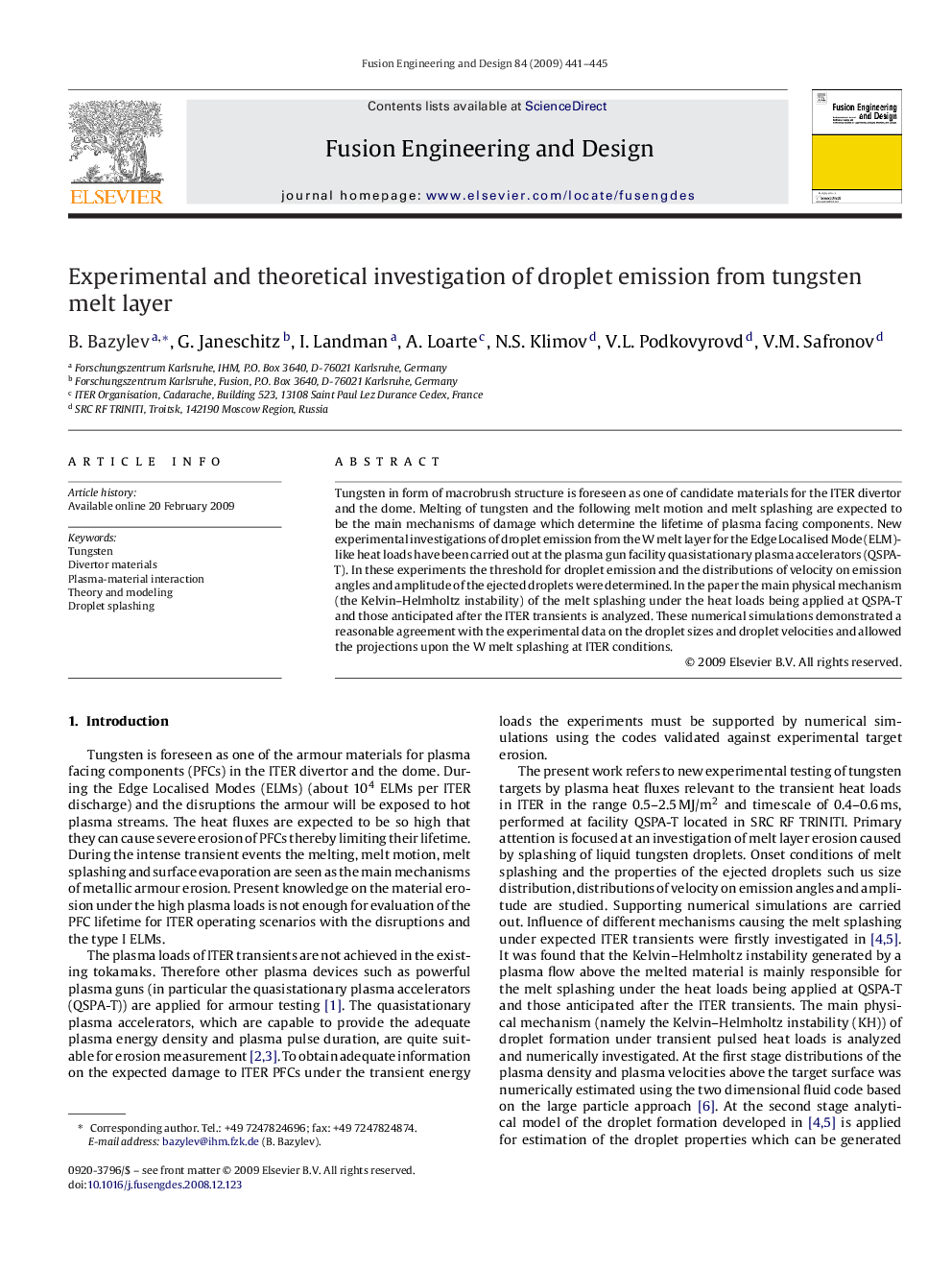| Article ID | Journal | Published Year | Pages | File Type |
|---|---|---|---|---|
| 273385 | Fusion Engineering and Design | 2009 | 5 Pages |
Tungsten in form of macrobrush structure is foreseen as one of candidate materials for the ITER divertor and the dome. Melting of tungsten and the following melt motion and melt splashing are expected to be the main mechanisms of damage which determine the lifetime of plasma facing components. New experimental investigations of droplet emission from the W melt layer for the Edge Localised Mode (ELM)-like heat loads have been carried out at the plasma gun facility quasistationary plasma accelerators (QSPA-T). In these experiments the threshold for droplet emission and the distributions of velocity on emission angles and amplitude of the ejected droplets were determined. In the paper the main physical mechanism (the Kelvin–Helmholtz instability) of the melt splashing under the heat loads being applied at QSPA-T and those anticipated after the ITER transients is analyzed. These numerical simulations demonstrated a reasonable agreement with the experimental data on the droplet sizes and droplet velocities and allowed the projections upon the W melt splashing at ITER conditions.
